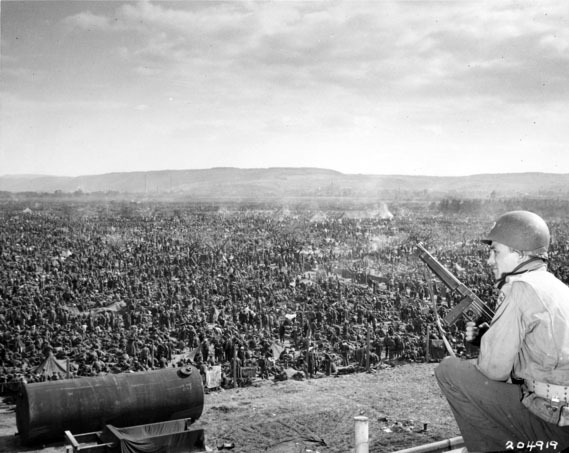The Ruhr Pocket was a battle between the Allies and the Germans in the Ruhr area of Germany from April 1 to 18, 1945. The Ruhr area is located in Western Germany and functions as the country’s industrial center. Taking the Ruhr was a critical goal of the Allies in order to weaken the Nazi government and push them to surrender. By the end of March 1945, the Allies were not far off from being close enough to encircle the Ruhr and finally capture it.
On March 7, American troops under General Omar Bradley had successfully captured the Ludendorff Bridge at Remagen, allowing them to quickly advance on the Ruhr from the south. In the north, British troops under Field Marshall Bernard Montgomery had crossed the Rhine on March 23 and were moving in on the Ruhr from the opposite direction. On April 1. these two groups met up east of the Ruhr, enabling them to encircle the 370,000 German troops to their west. In the following three days, more American troops began to tighten the Allies’ grip around the Ruhr, which now formed a pocket. Over the next two weeks, the Allies sent in attack after attack into the pocket, taking out large amounts of German forces in the area. Unable to launch a substantive counterattack, the Germans began to retreat north, despite Hitler denying German Field Marshal Walter Model’s request to do so. On April 14, the Allies had separated the pocket into two separate areas to the east and west. It became clear the remaining Germans did not stand much of a chance against the enclosing Allies. Instead of surrendering, Field Marshal Model dissolved his Army Group, and German soldiers quickly started to surrender on their own.
By April 16 the eastern pocket was taken by the Allies, with the remaining Germans surrendering. Two days later, the same happened to the western pocket. The Ruhr pocket thus brought on the largest German surrender in western Europe, with 300,000 Germans being taken as prisoners of war. On April 21, Field Marshal Model committed suicide, rather than formally surrender to the Allies. The capture of the Ruhr was a serious blow to Nazi Germany, aiding greatly in its demise. Only nine days after Model died, on April 30, Adolf Hitler committed suicide, and in the following week Nazi Germany surrendered.
Suggested Reading:
Derek S. Zumbro, Battle For the Ruhr: The German Army’s Final Defeat in the West (University Press of Kansas, 2006)








